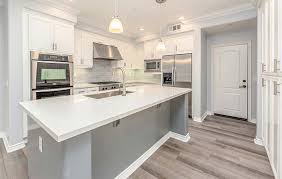
Architraves and skirting boards are more than decorative trims; they are essential components of well-designed interiors. They protect walls from damage, conceal gaps around doors and floors, and provide a polished, cohesive finish that enhances the overall look of any room. Selecting the perfect architraves and skirting for your interiors requires consideration of style, material, finish, and proportion. This guide provides practical advice to help you make the right choices and elevate your home’s design.
Understanding Architraves and Skirting Boards
Skirting boards, also called baseboards, run along the base of walls, shielding them from knocks, scuffs, and furniture damage. Architraves frame doors and windows, hiding gaps and providing architectural detail. Both elements serve functional and aesthetic purposes, and choosing the right style ensures harmony with the room’s design. Well-selected boards can complement flooring, furniture, and wall colors, giving interiors a professional and cohesive finish.
Choosing the Right Material
Material choice affects durability, aesthetics, and maintenance. Common options include:
-
MDF (Medium Density Fiberboard): Smooth, lightweight, and paint-ready, MDF is ideal for modern interiors and offers cost-effective versatility.
-
Solid Wood: Provides natural warmth, elegance, and long-term durability. Perfect for traditional or high-end interiors, though it may require occasional refinishing.
-
PVC and Synthetic Boards: Moisture-resistant, lightweight, and low-maintenance, making them suitable for kitchens, bathrooms, and utility spaces.
MDF is particularly popular for modern designs due to its smooth finish and ability to be painted in any color, while solid wood adds a premium touch and natural texture.
Selecting the Right Style and Profile
Skirtings and architraves come in various styles to match different interior aesthetics:
-
Classic and Ornate: Tall, detailed boards with decorative mouldings add elegance to period homes or formal spaces.
-
Modern and Minimalist: Slim, flat profiles provide a clean, subtle look, ideal for contemporary interiors.
-
Transitional Designs: Blend traditional detailing with modern simplicity, suitable for mixed-style interiors.
The profile you choose should complement other architectural elements and décor, ensuring visual consistency throughout the room.
Consider Height and Proportion
Height plays a critical role in achieving balance. Taller skirtings add grandeur, particularly in rooms with high ceilings, while shorter profiles are suitable for smaller spaces or minimalist designs. The thickness and proportion of architraves should align with door and window frames to maintain symmetry and visual harmony. Correct sizing ensures that these elements enhance, rather than overwhelm, the room.
Finishes and Colors
The finish and color of architraves and skirting boards can dramatically impact a room’s ambiance. Neutral colors provide subtle elegance, blending seamlessly with walls, while contrasting shades highlight architectural features and add visual interest. Painted MDF boards offer flexibility for updates and color changes, while stained or varnished wood emphasizes natural grain and richness. Choosing a finish that harmonizes with your interior palette creates a cohesive and polished look.
Installation Considerations
Proper installation is crucial for a professional finish. Steps to consider include:
-
Accurate measurement of walls, doors, and windows.
-
Precise cutting of boards, typically with a mitre saw for angled corners.
-
Test-fitting pieces before permanent attachment.
-
Securing boards with adhesive and nails or screws.
-
Filling gaps with caulk or wood filler for a seamless finish.
-
Painting or staining boards after installation for a polished appearance.
While DIY installation is possible, professional fitting is recommended for complex profiles or irregular spaces to achieve a flawless finish.
Room-Specific Tips
-
Living Room: Tall, decorative skirtings paired with matching architraves create a statement and add sophistication.
-
Bedroom: Subtle, painted skirtings complement walls and furniture, maintaining a calm, cohesive look.
-
Kitchen and Bathroom: PVC or synthetic boards are moisture-resistant, practical, and stylish in damp areas.
-
Hallways and Corridors: Continuous skirtings enhance flow and create a visually pleasing transition between spaces.
Maintenance and Longevity
High-quality architraves and skirtings are long-lasting and easy to maintain. MDF boards resist warping and can be repainted, solid wood offers durability and natural beauty, and PVC boards are moisture- and scratch-resistant. Regular dusting and occasional repainting ensure your boards remain fresh, clean, and visually appealing for years.
Conclusion
Choosing the perfect architraves and skirting for your interiors involves thoughtful consideration of materials, styles, profiles, and finishes. By selecting boards that complement your walls, flooring, and furniture, you can achieve a cohesive, polished look throughout your home. Proper sizing, careful installation, and regular maintenance further enhance their appearance and durability. Whether your design preference leans toward classic elegance, modern minimalism, or a blend of both, well-chosen architraves and skirtings are essential finishing touches that protect your walls, highlight architectural features, and elevate your interiors.
